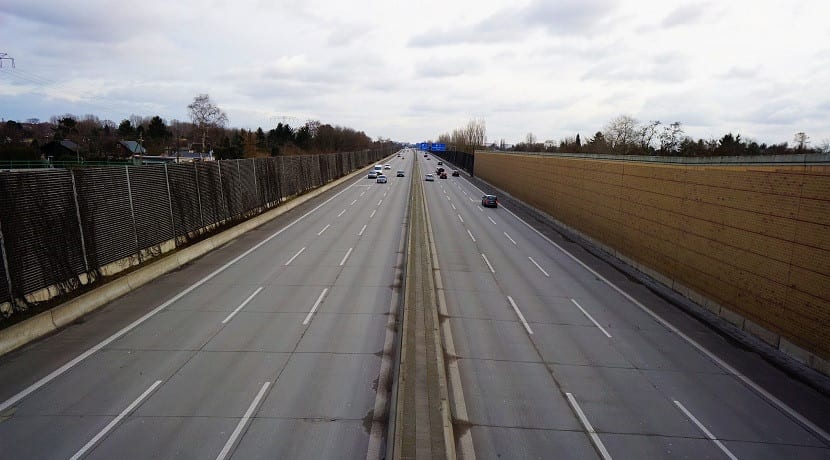
The speed limits in Spain they are very similar to those of other countries of the European Union, both on highways and roads and in the city. They are usually well signposted on the different types of roads through which we are going to circulate, but it is convenient to know what the general rule for each of them, to avoid confusion that could lead to a fine.
There are near 165.000 km of roads in Spain, so it is very likely that you will find more than one section in which you are not told the speed at which you should go. To avoid it, these are the basic notions that you must know to circulate correctly:
Interurban roads
conventional roads
The generic speed limit that can be driven on these roads with a tourism, motorcycle or light motorhomes is 90 km/h. Unless another lower speed is indicated by means of vertical signs due to circumstances such as sharp curves, level crossings or accumulation of accesses to farms. Are from double meaning with one lane for each and usually have a third lane going uphill when they have a steep hill. The speed limits in Spain for each vehicle are:
- Passenger cars, motorcycles, motorhomes up to 3.500 kg of MMA and pick-up: 90 km/h
- buses, vehicle derived from a passenger car, adaptable mixed vehicle: 90 km/h
- lorries, articulated lorries, vans, vans, articulated vehicles, cars with trailers and motorhomes of more than 3.500 kg of MMA: 80 km/h
- special vehicles (over 60 km/h), tricycles not assimilated to motorcycles and quadricycles: 70 km/h
- mopeds, light quadricycles and bicycles: 45 km/h. Although the bicycles will be able to exceed this speed in sections that allow it.

Still, precautions must be taken on this type of road because, as reported by the DGT: 7 out of 10 deaths on intercity routes occur on them. In addition, the figures continue to rise as indicated by data on accidents that occurred during 2017.
highways and expressways
The speed limit at which you can drive tourism or motorcycle on this type of road is 120 km/h, except if any sign indicates a lower speed. There are no roads on which you can legally drive at higher speeds in Spain, although there are movements to extend this speed to 140 km/h They haven't been very successful.
These pathways have independent dual carriageway. In other words, the directions of travel are separated by clearly defined protections. In addition, intersections are resolved with bridges or tunnels to avoid crossings and normally have a minimum of two lanes in each direction. The speed limits in Spain for each vehicle are:
- Passenger cars, motorcycles, motorhomes up to 3.500 kg of MMA and pick-up: 120 km/h
- buses, vehicle derived from a passenger car, adaptable mixed vehicle: 100 km/h
- lorries, articulated lorries, vans, vans, articulated vehicles, cars with trailers and motorhomes of more than 3.500 kg of MMA: 90 km/h.
- special vehicles (that can exceed 60 km/h), quadricycles and tricycles not assimilated to motorcycles: 70 km/h

urban roads
Calles
The limitation in normal streets of a locality is 50 km/h, unless the signs indicate another speed. It is one of the few that is the same for all motorized vehicles regardless of whether they have a trailer or not. There is only one exception: vehicles carrying dangerous goods can only circulate until 40 km/h.
Crossings
Traverses are roads that usually connect towns with interurban roads. They are subject to the same regulations as normal streets, so in principle they are also limited to 50 km/h for all motorized vehicles. Nevertheless, there are many exceptions which depend on the characteristics they have. If they have adequate protection and separation, they may be limited to higher speeds. Of course, if they do not have speed signs, it will always be "50".
Another aspect to take into account is that if there is highways or highways that cross a town, the speed considered by the regional authorities will be applied. But in no case should it exceed the 80 km/h.
Residential areas, schools...
The limitation for this type of zone is usually 20 ó 30 km/h. remains to discretion of the municipalities or institutions responsible apply this type of reduction to the general rule of 50 km/h if they deem it necessary. Hence measures such as the initiative proposed in Madrid to reduce speed to 30 km/h in 130 of its neighborhoods.

unpaved roads
For this type of road, the limit is always the same regardless of the type of vehicle. Although the surveillance and control exercised over them are very limited.
- Passenger cars, motorcycles, motorhomes up to 3.500 kg of MMA and pick-up: 30 km/h
- buses, vehicles derived from passenger cars, adaptable mixed vehicles: 30 km/h
- lorries, articulated lorries, vans, vans, articulated vehicles, cars with trailers and motorhomes of more than 3.500 kg of MMA: 30 km/h
- special vehicles (that can exceed 60 km/h), quadricycles and tricycles not assimilated to motorcycles: 30 km/h
- mopeds, light quadricycles and bicycles: 30 km/h
Images – Andrés Nieto Porras, lwtt93 and Evgeniy Isaev
1º Condition the roads to the permitted limits (there are communities where taxes are paid, they are not fixed because the budget is lost and the roads are unfortunate but the permitted limits are reduced in order to collect and the guilty without punishment long live immunity those who drive taxes should look more than their own) after applying them